Songer’s S1 Loudspeaker Uses Old-School Audio Tech to Deliver Lifelike Sound

Recently, my audio pal Jay Fisher and I roamed the halls of T.H.E. Show, a three-day swarm of audio enthusiasts, dealers, and manufacturers that converged in Southern California at the Hilton Costa Mesa. One of the best things about a full-scale show like this, is finally getting to see and experience the best audio components firsthand, especially ones we’ve heard about but not yet listened to. Most exciting are artisanal products whose designers approach engineering challenges with clean-sheet solutions, or just as exciting, with technology that has been forgotten for eons and is being newly reimagined.
We were specifically in search of loudspeakers that can truly sing with low-power tube amplification, a not-altogether easy pairing to achieve. As it turns out, the most notable exhibitor we met was Ken Songer, a loudspeaker designer and manufacturer from Portland, Ore., whose demo room held a revelatory discovery. Relatively new to the show circuit, Songer Audio had a smaller room showing two gorgeous pairs of speakers, one static and the other powered by a tasty new tube amp. Both were floor-standing designs, the model S1 ($37,000 per pair, and which we auditioned) is a 47-inch-tall tower, and the S2 ($49,000 per pair) is an open-baffle design using the S1’s single driver with the addition of a woofer.
More from Robb Report
KEF and Lotus Team Up for a New Pair of Wireless Loudspeakers in British Racing Green
The 10 Best Headphone Amplifiers to Make Your Favorite Music Sound Even Better
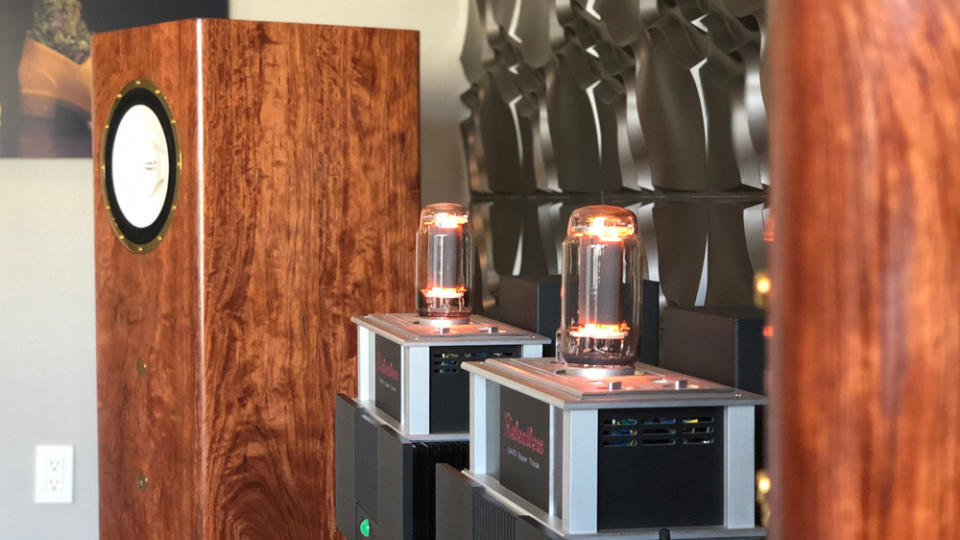
The first unorthodox aspect of the Songer S1 is that it employs only one driver—mounted at ear-level in a bass-reflex enclosure—ported at the lower edge of the front baffle. With a frequency response of 29 Hz to 20 kHz (+/-6 dB), the S1 is a crossover-less design with 93 dB efficiency and a SET (single-ended triode) tube amp–friendly impedance curve. Each 120-pound cabinet is exquisitely constructed in a choice of hardwoods and embellished with polished brass details which include driver and bass port surrounds, plus brass risers. Lined and damped, the cabinet is tuned to 24 Hz.
If there is a magic to the sound—and there is—it’s because of this speaker’s handmade, full-range transducer, and the way that it reproduces music with the speed, transparency, and impact of a live performance. Songer himself, with a more than 20-year career as a software engineer, devoted a decade to developing this driver, which uses a 10-inch dimeter cone made of Japanese washi paper, attached with a thin lambskin surround. In contrast, most cone speakers use ordinary paper pulp, or synthetic plastics, carbon fiber, Kevlar, aluminum, or more exotic materials, with surrounds made of rubber or petroleum-based materials.
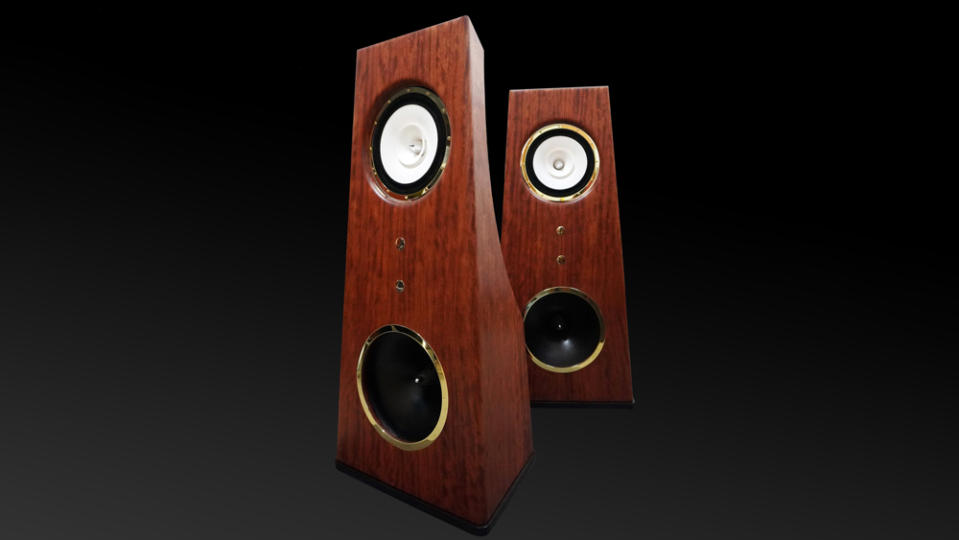
Songer’s cone is suspended in a patented spider assembly—itself a piece of art—that holds the voice coil in an acoustically transparent lattice with a carbon-fiber composite collar. A concentrically mounted cone of smaller diameter, immediately visible from the front, handles higher frequencies. Rarely used today, and called a “whizzer,” it is likewise attached to the voice coil. The entire moving mass weighs less than half an ounce, which translates to impressive transient response.
What makes the driver even more unusual is its active field-coil design, which uses a powerful 1.7 Tesla electromagnetic motor assembly. Offering much higher accuracy and lower distortion than permanent magnets employed in the magnetic assemblies of conventional cone speakers, a field-coil design requires the use of a power supply, in this case a variable power supply for each channel made for Songer Audio by Whammerdyne Heavy Industries.
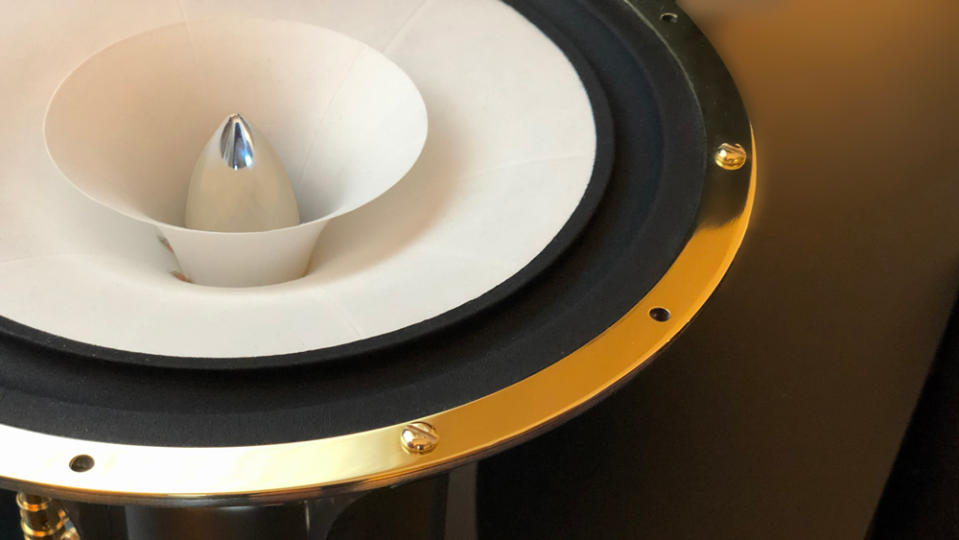
Originally, prior to the development of sufficiently powerful permanent magnets in the 1950s, all speakers used electromagnetic field coils. Despite much greater expense to manufacture, such a design greatly increases the precision of sound reproduction, along with the ability to increase or decrease current to the field coil, allowing the listener to fine-tune the sound to taste.
The smallish dimensions of the hotel room at T.H.E. Show, combined with the high efficiency of the S1, allowed Songer to pair them with the new Takatsuki TA-S01, a $32,000 integrated amplifier that makes just 8 wpc. Designed around the company’s excellent 300b vacuum tubes and custom Tamura transformers, this is a quintessential SET amplifier in the spirit of other Japanese SETs from Air Tight, Luxman, and Shindo. Some would call a pairing of Songer’s loudspeakers and the Takatsuki a marriage made in heaven. We call it a way to spend about $70,000 and live the two-channel dream.
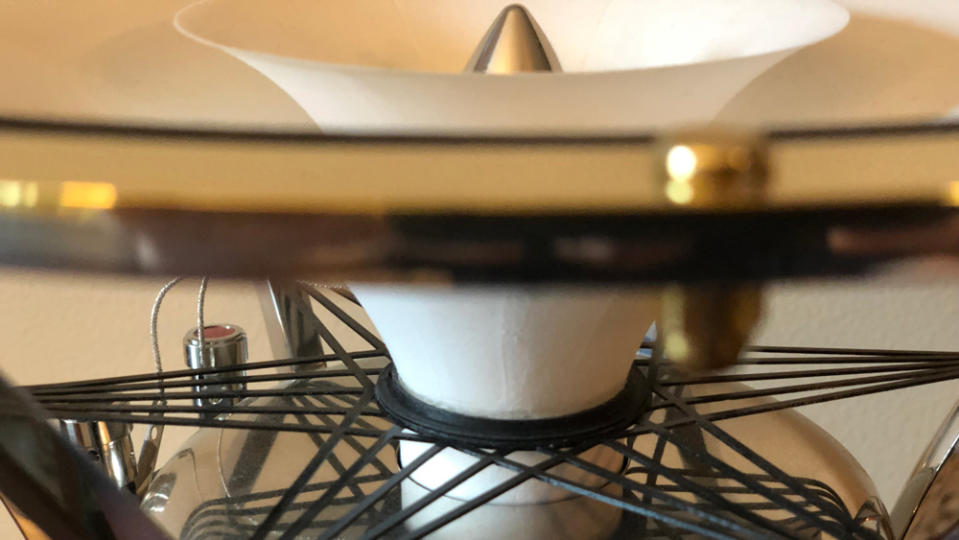
Because a single-driver transducer acts as a time-aligned point-source, the sound across the frequency spectrum is coherent in a way that no multi-driver system can be. Non-fatiguing and transparent, the sound of the Songer S1 had us constantly referring back to our beloved Quad 57 electrostatics. It’s true that the Quad has a devout cadre of acolytes who, once exposed, have that loudspeaker’s unchallenged ability to simply sound real, permanently etched in their synapses.
It was precisely this sonic signature that the Songer approached and, at the frequency extremes, excelled the Quads. The S1 also described its soundstage across a broader horizontal range, unlike the rather uncharitable Quad that presents one sweet spot for the listener and nothing more. And Songer’s S1 plays much louder. It’s uncompressed at volumes that would make the Quads cry “uncle.”
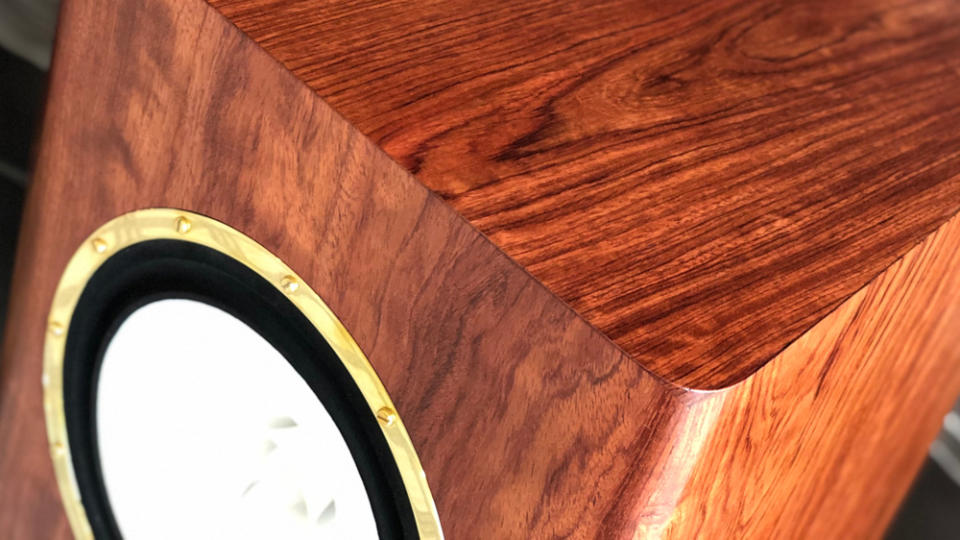
Songer has resurrected old technical solutions and invented new ones, while expressing aesthetic sensibilities and artisanal skills that make these loudspeakers as much objects of art as they are industrial products. Those who appreciate natural recordings of acoustical music, and audiophiles who want their vacuum-tube electronics to sing, simply must audition the Songer S1.
Sign up for Robb Report's Newsletter. For the latest news, follow us on Facebook, Twitter, and Instagram.


